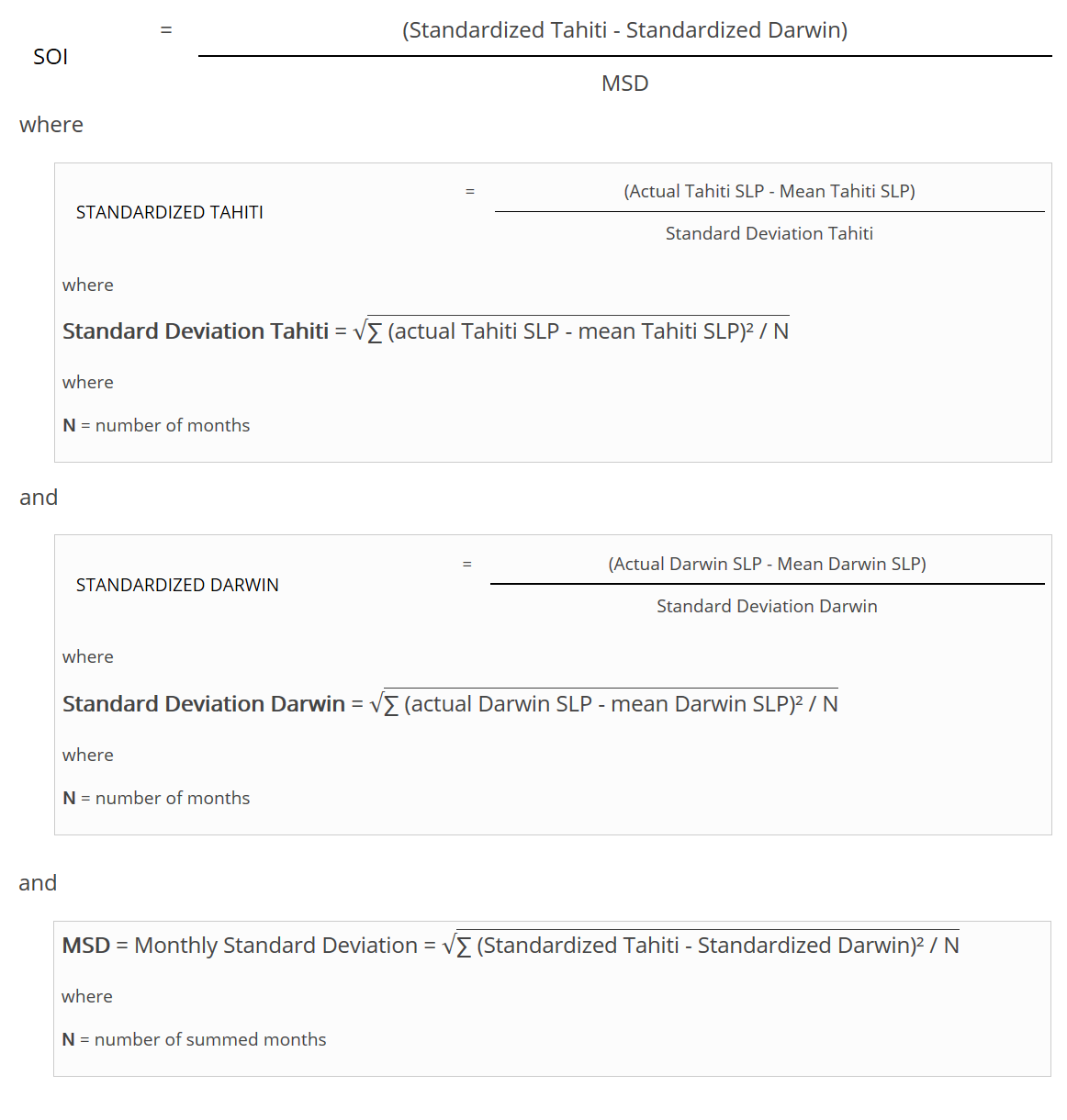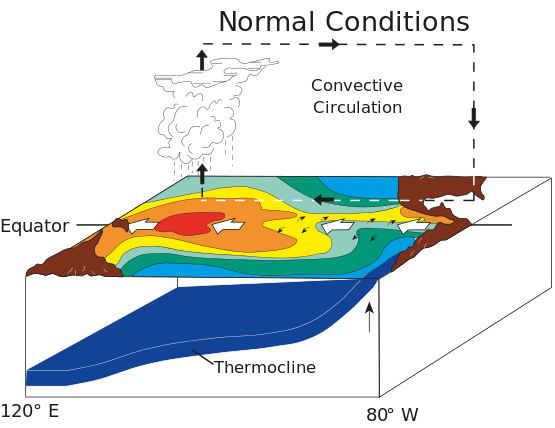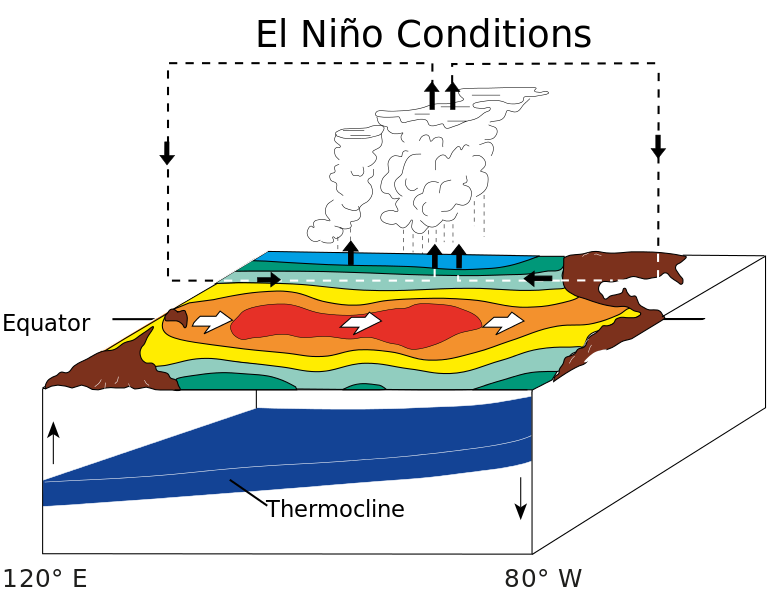Table of Contents
The Southern Oscillation
Author: Arian Bastani
Southern Oscillation
'Southern Oscillation' is the term used for the continual rise and fall of the atmospheric pressure difference at sea- level, between the Indonesian Low and the South Pacific High. [2] The Southern Oscillation Index (SOI) is a standardized index for the strength of the oscillation [3] based on the observed sea level pressure differences between Tahiti and Darwin, Australia. The negative phase of the SOI represents below-normal air pressure at Tahiti and above-normal air pressure at Darwin. Prolonged periods of negative (positive) SOI values coincide with abnormally warm (cold) ocean waters across the eastern tropical Pacific typical of El Niño (La Niña) episodes. [1]
Time series of SOI[1]
Calculation of SOI [1]
Walker Circulation
The Walker circulation is caused by the pressure gradient force that results from a high pressure system over the eastern Pacific ocean, and a low pressure system over Indonesia.[3] This induces easterly surface winds across the equatorial pacific, which, in turn, cause upwelling along the peruvian coast due to Ekman. The upwelling deep water causes cool temperatures and high nutrient content.
El Niño
When the Walker circulation weakens, so does the upwelling along the peruvian coast and the result is a higher sea surface temperature. Below are illustrations of normal conditions and El Nino conditions Walker Circulation. [3]
ENSO
The two variations are coupled: the warm oceanic phase, El Niño, accompanies high air surface pressure in the western Pacific, while the cold phase, La Niña, accompanies low air surface pressure in the western Pacific. [3]
References
[1] https://www.ncdc.noaa.gov/teleconnections/enso/indicators/soi/
[2] Ocean Circulation (Second Edition), Brown et al., page 173
[3] http://en.wikipedia.org/wiki/El_Ni%C3%B1o_Southern_Oscillation
Comments
ToDo:
- Mention ENSO remote effects (impact of El Niño and La Niña on climatic condistions in other parts of the world, e.g. East Africa, North America. Is there a significant influence on the North Atlantic and European weather?)
- Add a short discussion of predictability: How long in advance can a switch in the SOI be predicted?
- Outlook: How is ENSO expected to change in a warming climate?
— Samuel Eberenz 2015/05/26 09:51



